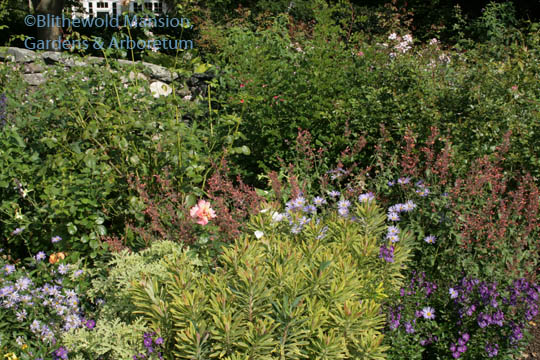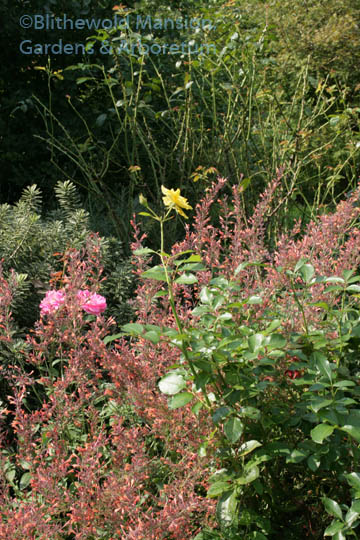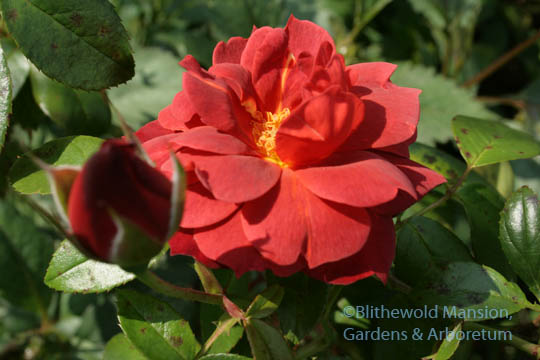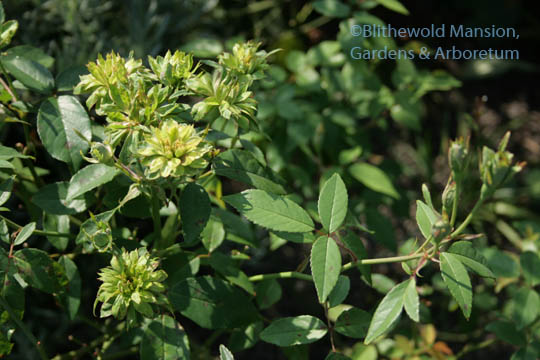Filling in the gaps
Last week I had the great pleasure of speaking with the author/photographer of some of my all-time favorite garden books. Ken Druse, who wrote Planthropology and Making More Plants among about a bazillion others, called – while a raging river ran through his garden – to quiz me about Blithwold’s Rose Garden and he recorded our conversation for his podcast, Real Dirt. Those who know me, know that I am a reluctant (read terrified) public speaker: when I have something to say, I’d rather write it down. But Ken, who is effortlessly articulate in print and voice, put me at ease and our few minutes were up before I even knew it. I only wish I had said…
Most of you are already familiar with our Rose Garden, so feel free to pass by the rest of this post. But for anyone who might be visiting for the first time via Real Dirt, allow me to fill in some of my gaffs gaps.
 Ken intended to ask about how we prepare the Rose Garden for winter and in case he calls back to get the scoop, I’ll hold off on those details for now. We got instantly sidetracked (my doing) by compost instead. The Rose Garden was compacted from years of tromping through it to deadhead and rake leaves so we turned about 3″ of compost in to the soil, which improved the drainage immensely. I also want to say that while I’m perversely pleased that I never mentioned the word “sustainable” I feel I should do so here. Roses, unless you plant your neighborhood’s natives, are inherently difficult.
Ken intended to ask about how we prepare the Rose Garden for winter and in case he calls back to get the scoop, I’ll hold off on those details for now. We got instantly sidetracked (my doing) by compost instead. The Rose Garden was compacted from years of tromping through it to deadhead and rake leaves so we turned about 3″ of compost in to the soil, which improved the drainage immensely. I also want to say that while I’m perversely pleased that I never mentioned the word “sustainable” I feel I should do so here. Roses, unless you plant your neighborhood’s natives, are inherently difficult.  They are heavy feeders, need tons of water, and a lot of gardeners have gotten hooked on spraying regimes to keep them fungus and pest-free. By filling in the garden’s gaps with bulbs, annuals, perennials and shrubs, and refusing to spray, we not only encourage beneficial wildlife but the garden stays colorful even when the roses start to look terrible. Which incidentally, to bring it back around, they haven’t – ever since we amended the soil and installed irrigation. I like to say that our Rose Garden is as-sustainable-as-possible-under-the-circumstances.
They are heavy feeders, need tons of water, and a lot of gardeners have gotten hooked on spraying regimes to keep them fungus and pest-free. By filling in the garden’s gaps with bulbs, annuals, perennials and shrubs, and refusing to spray, we not only encourage beneficial wildlife but the garden stays colorful even when the roses start to look terrible. Which incidentally, to bring it back around, they haven’t – ever since we amended the soil and installed irrigation. I like to say that our Rose Garden is as-sustainable-as-possible-under-the-circumstances.
I also didn’t mention “Knock-Out” roses among my list of favorites because they’re not on it (though we do have a few in and out of that garden.) To give them their due, Knock-Outs are tough-as-nails and need very little in the way of babying but they lack the grace and charm of the roses that are on my list. I mentioned Rosa ‘Champlain’ but forgot to say that I really love how its deep-green foliage turns burgundy/bronze towards winter. I tried again to take a picture of Rosa ‘Hot Cocoa’ and the color simply defies my lens. It is redder here (and maybe because of the cooler nights lately) than the coppery-brown it can be. And I know it’s not everyone’s cup of tea but little Rosa chinensis ‘Viridiflora’ is blooming its heart out right now. But then, I’ll take weird over knock-out any day.
I want to thank Ken again for his kindness to me and for speaking so generously about Blithewold – especially while his own garden was being savagely ravaged by both Irene and Lee. (I’d have been too distracted for any words at all…) And thank you for listening/reading. Have you filled the gaps between your roses too?


